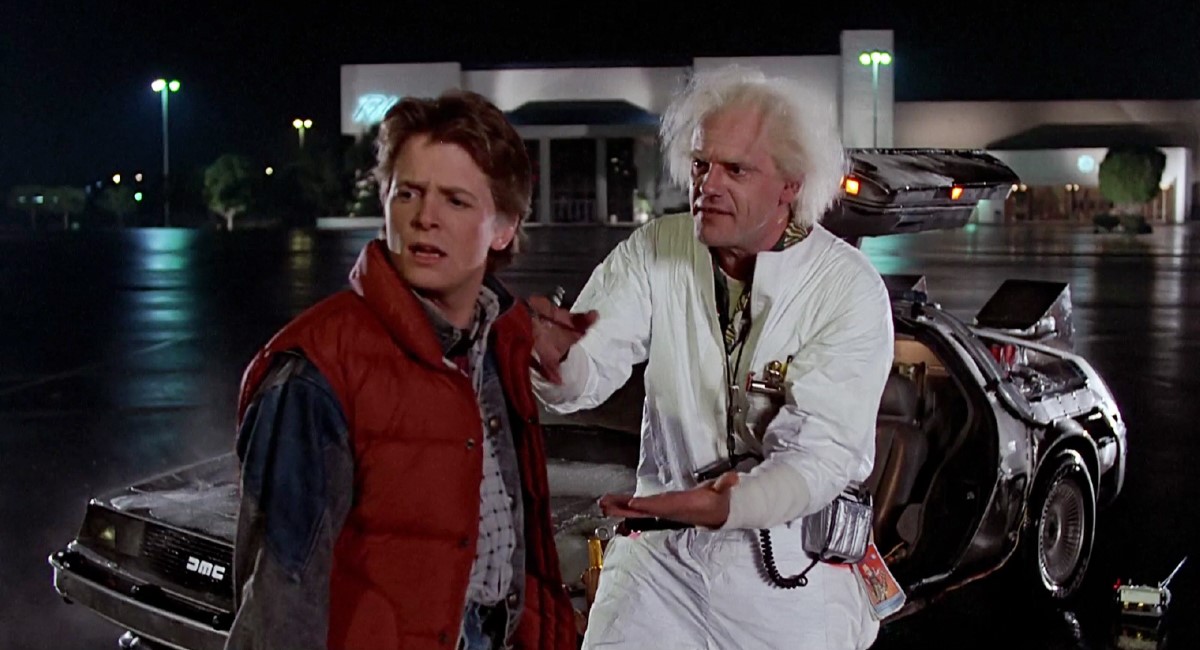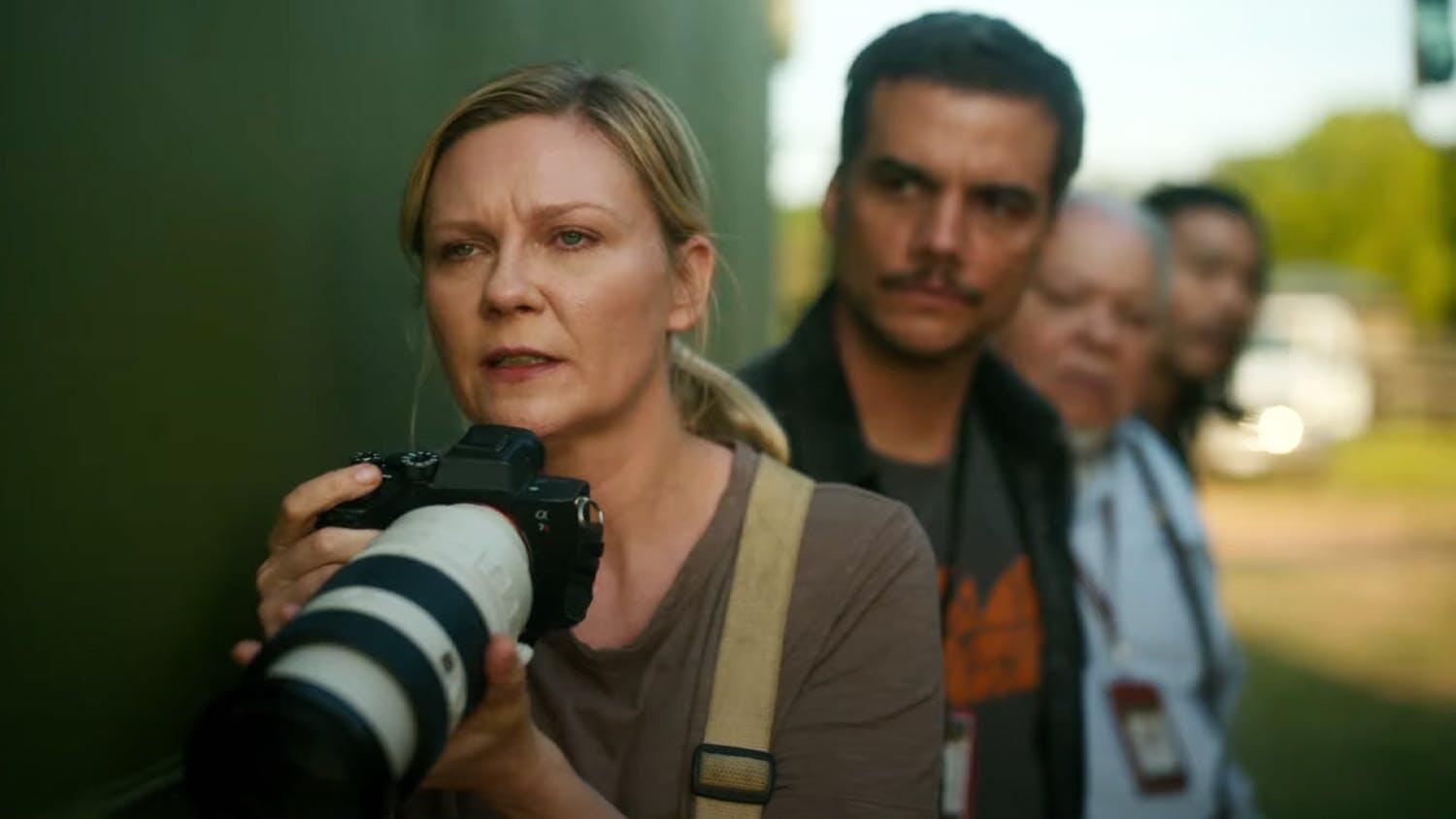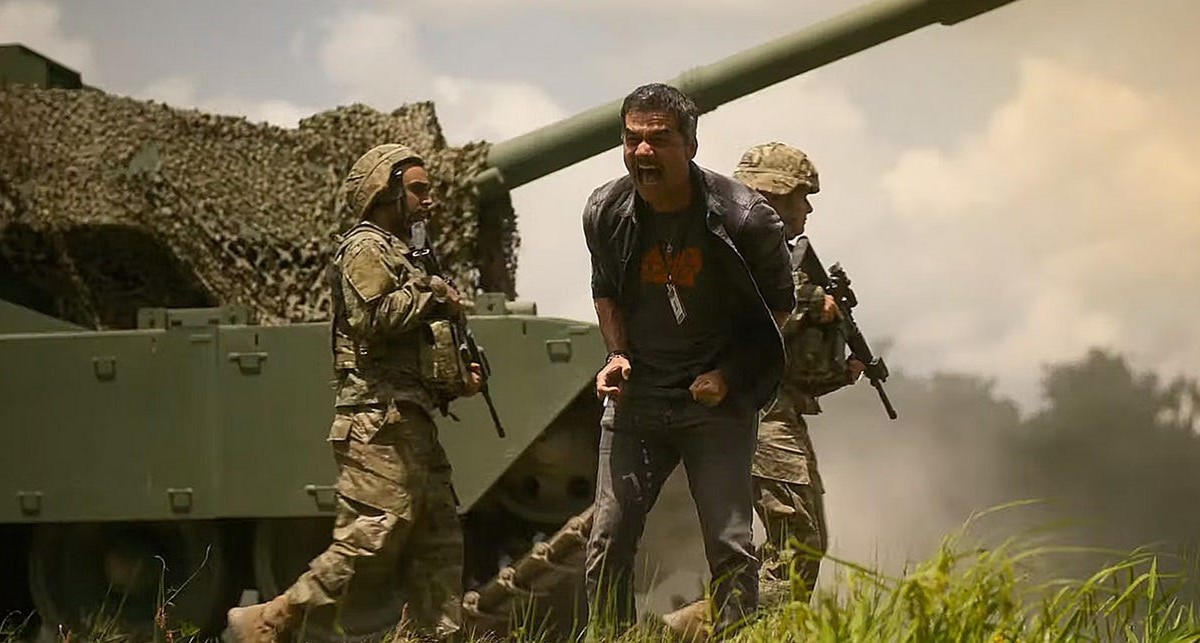by Pauline Kael
Back to the Future is a piece of Pop Art Americana, featuring Christopher Lloyd as a small-town crackpot inventor who putters in his garage and builds a nuclear-powered Rube Goldberg time machine on the chassis of a gull-winged DeLorean. It’s a clever, generally likable screwball comedy, with, basically, a very small cast. The inventor has only two friends: a big, floppy dog named Einstein and Marty McFly (Michael J. Fox), a seventeen-year-old high-school senior who visits him to escape his drab family life with a complaining, uptight mother (she belts down her liquor), a couple of loser siblings, and a whipped father who’s a failure in just about every department. (The man is such a forlorn creep that he laughs in sync with the TV laughtrack.) Almost everything that happens in the first part, set in Hill Valley, in Northern California, in 1985, is preparation for gags and plot devices that pay off when Marty escapes from a team of terrorists (whose plutonium the inventor has stolen to power the DeLorean) by jumping into the machine, which hurtles him to Hill Valley, 1955.
There Marty meets his parents as seventeen-year-olds going to the same massive, ugly high school he has been attending. It’s a different era, though; it’s the period when large numbers of teen-agers first began to have money to spend on clothes and records, and became a targeted consumer group, and when they also began to have access to cars, which meant freedom, and maybe even sex—or, at least, necking. Lorraine (Lea Thompson), Marty’s mother-to-be, is a moony kid who lives in a state of dazed aphrodisia—her hormones seem to have blurred her expression—while George McFly (Crispin Glover), his father-to-be, is a tall, skinny, pathetic wimp who secretly writes sci-fi stories. Marty’s arrival balls things up. Lorraine thinks he’s a dreamboat, and develops a lascivious crush on him. Marty is panicked: How is he going to get her to switch her fixation from him to George, so he can eventually be born? The fun in the time-travel genre is, of course, in the hero’s interfering with the course of history; specifically, Marty has to change the weakling George McFly—has to stop him from cringing, and make him stand up for himself, so he can win Lorraine. And while Marty’s doing that the audience has the incidental fun of catching the comparative pop-culture references of the eighties/fifties time warp.
Directed by Robert Zemeckis, from a script he wrote with his regular teammate, Bob Gale, Back to the Future is ingenious; it has the structure of a comedy classic, and it’s consistently engaging. If I can’t work up much enthusiasm for it, it’s because I’m not crazy about movies with kids as the heroes—especially bland, clean-cut, nice kids like Marty. In this role. Michael J. Fox (he’s one of the stars of the NBC series Family Ties) approaches acting as a form of aerobics—he’s primed, he’s nimble and proficient, and he delivers a processed, TV actor’s charm. Everything he does is on the surface. Talking to George, he’s like a feisty football coach trying to psych up a sad-sack player. And he’s exactly, I think, what the moviemakers wanted. Steven Spielberg, under whose aegis the picture was made, says, “Back to the Future is the greatest Leave It to Beaver episode ever produced.” That’s what’s the matter with it. I don’t watch Leave It to Beaver reruns, and when I go to the movies I don’t want to see a glorified Leave It to Beaver.
Actually, this movie, with its high-school-age hero and the dream that he fulfills—the dream of being part of a deluxe happy family, like the ones in TV commercials—represents a culmination of the fifties’ appeal to the youth market. Teen-age tastes now dominate mainstream moviemaking, and that’s where Zemeckis and Gale are working. (The movie is their fantasy about becoming mediocre—i.e., successful.) Marty doesn’t have the consciousness of an adult hero, and he doesn’t have a child’s imagination, either; he’s a hero for the young audience—a teen idol. And the picture doesn’t have anything like the rambunctiousness or the maniacal edge of Zemeckis and Gale’s wonderful 1980 film Used Cars (which was also made under Spielberg’s aegis, but before he became a youth-market czar, and which failed at the box office). Zemeckis knows how to set up a gag, and how to set his players on collision courses; his films—including Romancing the Stone (which he and Gale didn’t write)—have comic drive. But scenes here, such as the ones in which George is bullied by a big jock, are laid on too thick and then repeated; at times, Back to the Future makes you feel you’re at a kiddies’ matinee. (Maybe it’s too bad that this movie is as satisfying as it is: a few more pictures like The Goonies, and even kiddies may be bored watching kiddies.)
What keeps Back to the Future from being a comedy classic is that its eye is on the market. Despite Zemeckis and Gale’s wit in devising intricate structures that keep blowing fuses, the thinking here is cramped and conventional. I wish that moviemakers and their designers would stop using old Life magazines for their images of the American past. Hill Valley in 1955 has no pop glint, no vitality; the town is embalmed—it’s printed on glossy paper. And the film’s idea of happiness in the eighties—with one of Marty’s siblings turned into a Yuppie and the other into a deb, and his parents strolling like lovers amid the pastel sofas in a living room that looks like a commercial for a furniture-warehouse sale—should be a satirical joke but isn’t.
Christopher Lloyd is a blissful silly, though. His wild-eyed glare doesn’t seem to be directed toward anything in front of him—he’s glaring backward into his own knotted-up mental processes. He makes you feel that the wires in his head are crossed; he’s missing connections. And his thoughts seem to work independently of his gestures: his long arms swing about helplessly. He’s like Frankenstein’s monster as a sweetheart. And Lea Thompson is a gifted mime. Her woozy-faced young Lorraine has a sly lustiness that’s entrancing. Crispin Glover’s George McFly, with his cowering posture and his tortured mouth, is almost too painful a caricature. He has more force than anyone else in the movie—possibly because he’s the only character that Zemeckis and Gale push to the limit. (In addition to the other horrors piled on him, he’s a teen-age Peeping Tom.) I’m not sure what to make of the performance, but the movie would be considerably more innocuous without it.
New Yorker, July 29, 1985





